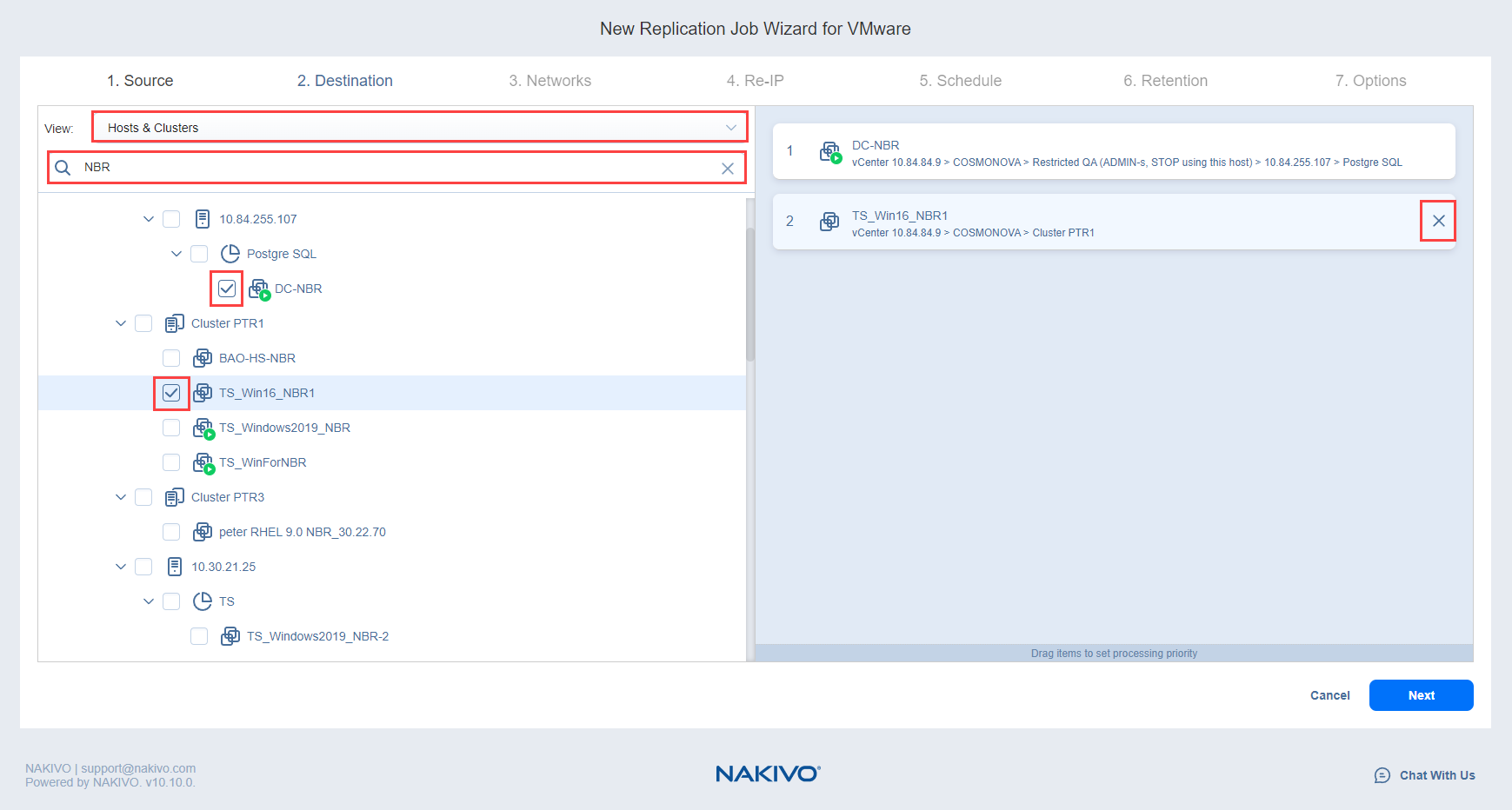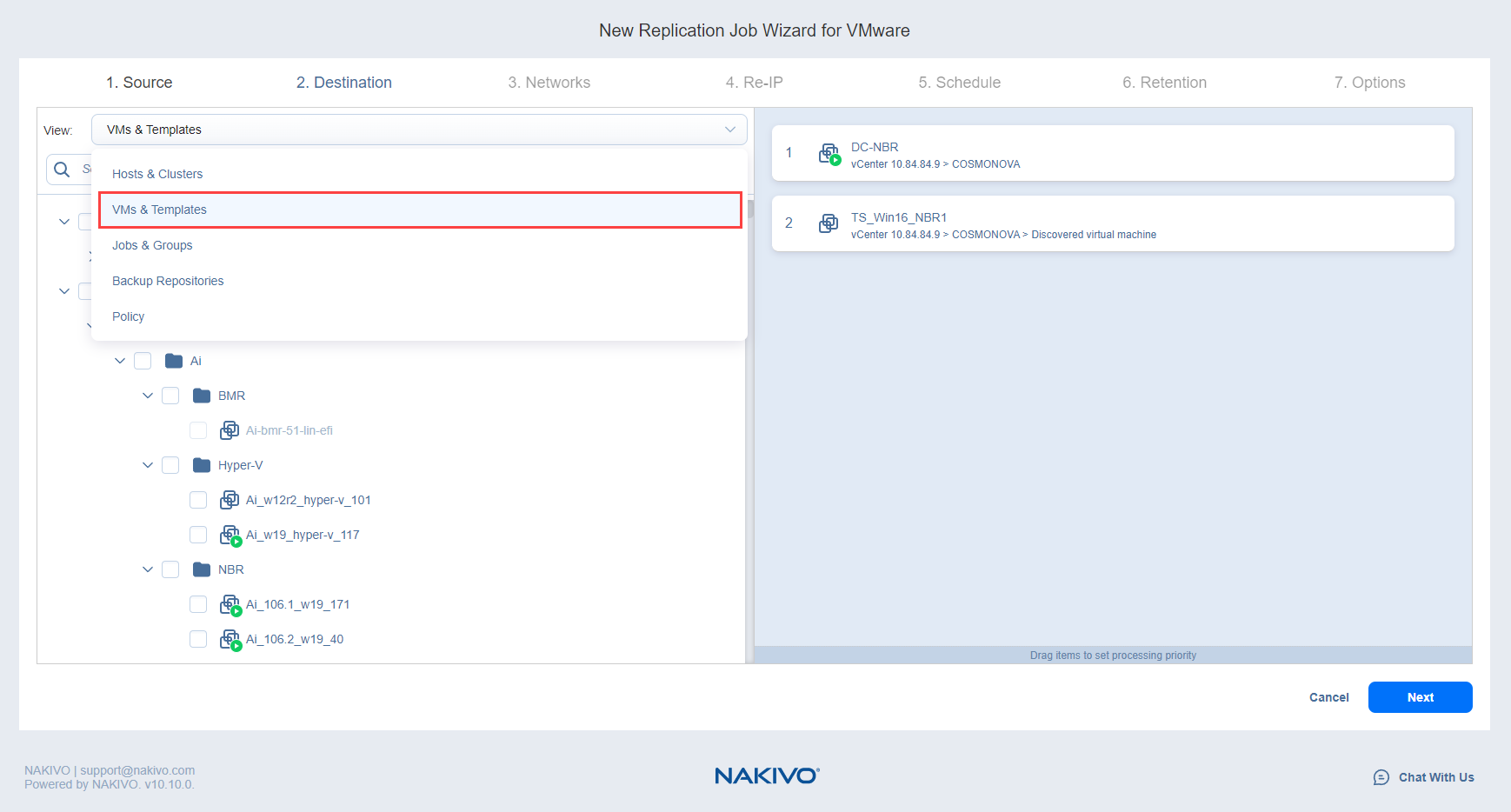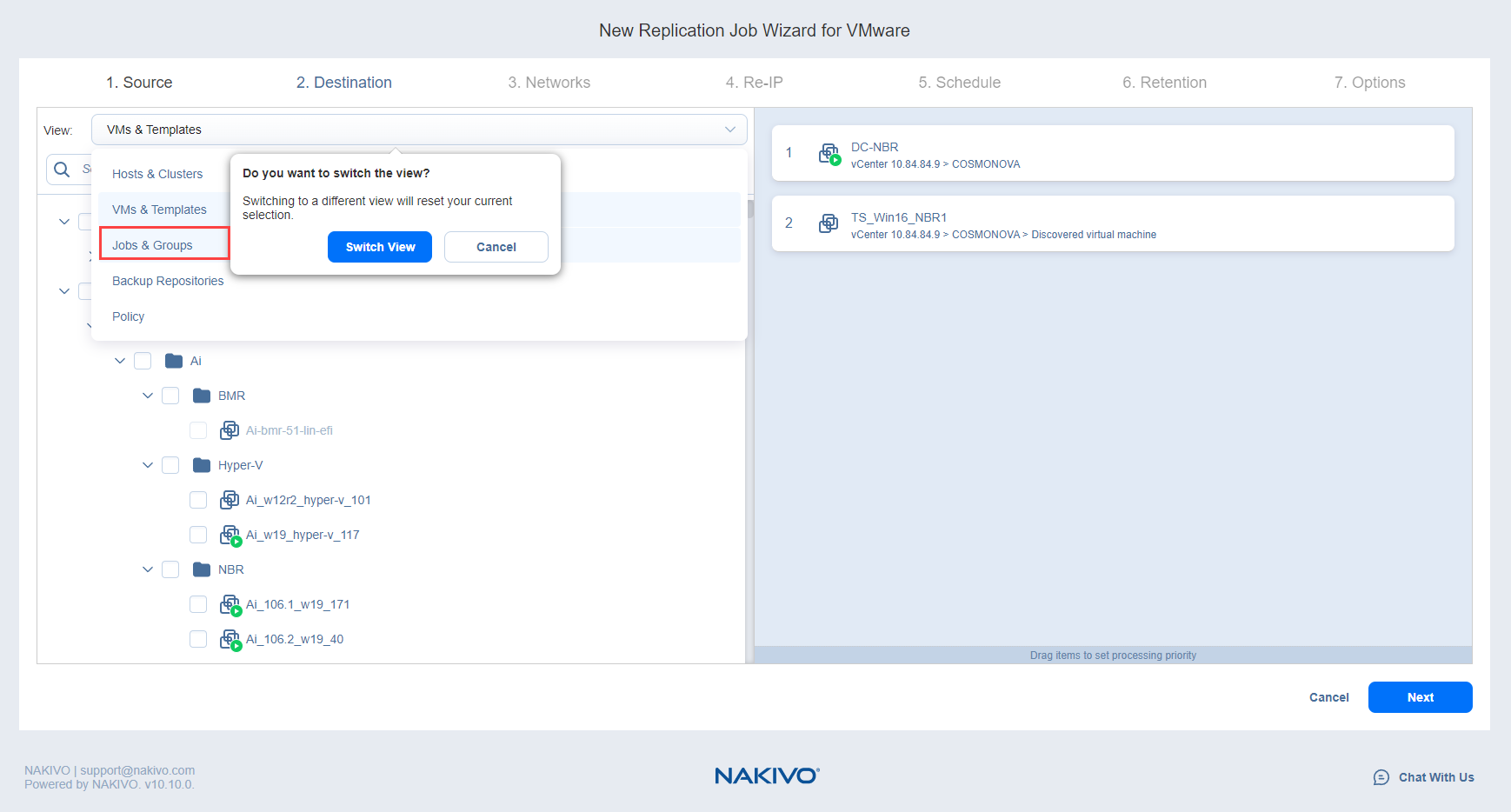Replication Job Wizard for VMware: Source
On the Source page of the wizard, select one of the views to add VMware items to your replication job.
Host and Clusters
When the Host & Clusters view is chosen, the inventory tree opens in the left pane and displays all VMware items: clusters, hosts, folders, resource pools, and VMs. Proceed as follows:
-
Optionally, you can filter the inventory tree by entering a string into the Search box. You can enter a part of or the entire name of the item.
-
Select VMware items by placing a checkmark to the left of each item.
-
The selected items appear in the right pane of the page. You can reorder the selected items by dragging a VM or a container with the pointer to a new position. By doing that, you can specify to replicate the most important VMs first.
-
Review the list of selected VMware items. You can remove a selected VM or a container from the replication job in one of the following ways:
VMs and Templates
When the VMs & Templates view is selected, the inventory tree displays VMware hosts, VMs, and VM templates. Proceed as described for the Hosts & Clusters view above.
Note
Replication of VM templates is not supported.
Jobs and Groups
When the Jobs & Groups view is selected, the inventory tree displays groups, jobs, and backups of the appropriate hypervisor. Selecting a backup from the list allows you to replicate VMs directly from the backup (Refer to Replication From Backup). Proceed as described for the Hosts & Clusters view above.
Backup Repositories
When the Backup Repositories view is selected, the inventory tree displays backup repositories that contain backups of the appropriate hypervisor. Proceed as described for the Hosts & Clusters view above.
Note
Replication of VM templates is not supported.
Both federated and standalone (not used as members of federated repositories) backup repositories can be selected.
Note
You cannot select a federated repository member as a source for replication jobs.
Selecting an item in the tree adds the parent item and all children items to the right pane.
Policy
When the Policy view selected, job policies can be used. Refer to Managing Job Policies for details. If the items were selected in alternate views, a dialog box opens warning you that switching to the Policy view will reset your current selection. Click Switch View to confirm switching to the Policy view. Make sure that at least one item matches the available set of policy rules. Refer to Managing Policy Rules for details.
Click Next to confirm adding selected VMs to the replication job. The wizard will display the next page.
Notes
If you cannot find a VM or a container:
Make sure the corresponding vCenter or ESX(i) host has been added to the inventory.
By adding a VMware container to the job, you ensure that important VMs are always protected. If you add a VMware container to the job:
All VMs currently available in the selected container will be replicated.
All new VMs that will be created in (or moved to) the container in the future will be automatically added to the job and replicated.
The order in which VMs are replicated is important if the Transporter performing replication cannot process all VMs of the job simultaneously — either because the Transporter is processing other jobs at the same time or because the job contains more VM disks than a Transporter’s maximum load specified during the Transporter creation.
If all disks of a VM are unsupported (such as RDM disks in physical compatibility mode), this VM will be disabled in the inventory tree and it will not be possible to select it. Refer to Supported Platforms for details.
VMs marked as primary are protected by VMware Fault Tolerance. Disabled VMs are Fault Tolerance shadow VMs.




